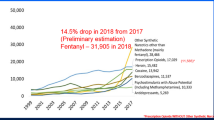Abstract
Background
A multidisciplinary approach has been shown to be effective for the treatment of intractable pain. However, few hospitals in Japan have established liaison clinics for such patients. In this study, we investigated the short-term results of a liaison clinic for patients with intractable chronic pain.
Methods
Study participants comprised 53 outpatients (20 men, 33 women) with intractable chronic pain who visited our hospital between April 2012 and March 2013. At baseline, patients completed a self-reported questionnaire and provided demographic and clinical information. Experts in various fields (anesthesia, orthopedic surgery, psychiatry, physical therapy, and nursing) conducted examinations of patients and attended a weekly conference during which patients' physical, psychological, and social problems were discussed and courses of treatment were determined. All patients were assessed using the Numerical Rating Scale (NRS), Pain Catastrophizing Scale (PCS), Hospital Anxiety and Depression Scale (HADS), and Pain Disability Assessment Scale (PDAS). Eligibility for the pain liaison outpatient clinic was evaluated using multiple logistic regression analysis.
Results
After a 6-month follow-up period, no significant changes were seen in scores for the NRS, PDAS, or HADS for depression. In contrast, scores for both the PCS and HADS for anxiety were significantly reduced after 6 months of treatment (p < 0.05). HADS for anxiety was identified as a factor related to patient resistance to attending the pain liaison outpatient clinic (p < 0.05).
Conclusions
This liaison clinic for patients with intractable chronic pain was able to improve patient anxiety. Severe anxiety at the initial visit represented a risk factor for dropout from the clinic.


Similar content being viewed by others
References
Grover S, Kate N. Somatic symptoms in consultation-liaison psychiatry. Int Rev Psychiatry. 2013;25(1):52–64.
Sollner W, Creed F, European Association of Consultation-Liaison Psychosomatics Workgroup on Training in Consultation-Liaison. European guidelines for training in consultation-liaison psychiatry and psychosomatics: report of the EACLPP workgroup on training in consultation-liaison psychiatry and psychosomatics. J Psychosom Res. 2007;62(4):501–9.
Cottencin O, Versaevel C, Goudemand M. In favour of a systemic vision of liaison psychiatry. Encephale. 2006;32(3 Pt 1)):305–14.
Rymaszewska J, Sollner W. Training in consultation-liaison psychiatry in Eastern Europe. J Psychosom Res. 2012;72(6):460–2.
Jensen MP, Karoly P, Braver S. The measurement of clinical pain intensity: a comparison of six methods. Pain. 1986;27(1):117–26.
Osman A, Barrios FX, Gutierrez PM, Kopper BA, Merrifield T, Grittmann L. The pain catastrophizing scale: further psychometric evaluation with adult samples. J Behav Med. 2000;23(4):351–65.
Zigmond AS, Snaith RP. The hospital anxiety and depression scale. Acta Psychiatr Scand. 1983;67(6):361–70.
Arts MP, Kols NI, Onderwater SM, Peul WC. Clinical outcome of instrumented fusion for the treatment of failed back surgery syndrome: a case series of 100 patients. Acta Neurochir (Wien). 2012;154(7):1213–7.
Yamashiro K, Arimura T, Iwaki R, Jensen MP, Kubo C, Hosoi M. A multidimensional measure of pain interference: reliability and validity of the pain disability assessment scale. Clin J Pain. 2011;27(4):338–43.
Cohen J. A power primer. Psychol Bull. 1992;112(1):155–9.
Engel GL. The need for a new medical model: a challenge for biomedicine. Science. 1977;196(4286):129–36.
Mitchell G, Del Mar C, Francis D. Does primary medical practitioner involvement with a specialist team improve patient outcomes? A systematic review. Br J Gen Pract. 2002;52(484):934–9.
Valdes-Stauber J, Vietz E, Kilian R. The impact of clinical conditions and social factors on the psychological distress of cancer patients: an explorative study at a consultation and liaison service in a rural general hospital. BMC Psychiatry. 2013;20(13):226.
Ruscheweyh R, Dany K, Marziniak M, Gralow I. Basal pain sensitivity does not predict the outcome of multidisciplinary chronic pain treatment. Pain Med. 2015 Mar 20.
Holmner EP, Fahlstrom M, Nordstrom A. The effects of interdisciplinary team assessment and a rehabilitation program for patients with chronic pain. Am J Phys Med Rehabil. 2013;92(1):77–83.
Hechler T, Ruhe AK, Schmidt P, Hirsch J, Wager J, Dobe M, Krummenauer F, Zernikow B. Inpatient-based intensive interdisciplinary pain treatment for highly impaired children with severe chronic pain: randomized controlled trial of efficacy and economic effects. Pain. 2014;155(1):118–28.
Hole RW, Rush AJ, Beck AT. A cognitive investigation of schizophrenic delusions. Psychiatry. 1979;42(4):312–9.
Wykes T, Steel C, Everitt B, Tarrier N. Cognitive behavior therapy for schizophrenia: effect sizes, clinical models, and methodological rigor. Schizophr Bull. 2008;34(3):523–37.
Tarrier N, Wykes T. Is there evidence that cognitive behaviour therapy is an effective treatment for schizophrenia? A cautious or cautionary tale? Behav Res Ther. 2004;42(12):1377–401.
Leeuw M, Goossens ME, Linton SJ, Crombez G, Boersma K, Vlaeyen JW. The fear-avoidance model of musculoskeletal pain: current state of scientific evidence. J Behav Med. 2007;30(1):77–94.
Vlaeyen JW, Linton SJ. Fear-avoidance and its consequences in chronic musculoskeletal pain: a state of the art. Pain. 2000;85(3):317–32.
Sullivan MJ, Rodgers WM, Wilson PM, Bell GJ, Murray TC, Fraser SN. An experimental investigation of the relation between catastrophizing and activity intolerance. Pain. 2002;100(1–2):47–53.
Kirchen-Peters S, Fehrenbach RA, Diefenbacher A. Psychiatric outpatient consultation-liaison services—how do they work and what are their effects: results of a pilot study? Psychiatr Prax. 2012;39(8):394–9.
Acknowledgments
No grants were received in support of this manuscript.
Conflict of interest
The authors declare that they have no conflict of interest.
Author information
Authors and Affiliations
Corresponding author
Electronic supplementary material
Below is the link to the electronic supplementary material.
About this article
Cite this article
Tetsunaga, T., Tetsunaga, T., Nishie, H. et al. Establishment of a liaison clinic for patients with intractable chronic pain. J Orthop Sci 20, 907–913 (2015). https://doi.org/10.1007/s00776-015-0748-y
Received:
Accepted:
Published:
Issue Date:
DOI: https://doi.org/10.1007/s00776-015-0748-y



